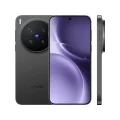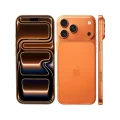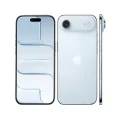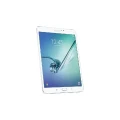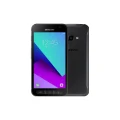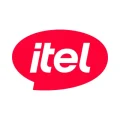- Home
- All Products
- Google Pixel
- Google Pixel 10 Pro Fold
Google Pixel 10 Pro Fold
-
Battery: 5015 mAh
-
RAM: 16GB, 16GB, 16GB
-
Storage: 256GB, 512GB, 1TB
-
Display: Foldable LTPO OLED, 8.0 inches
-
Camera: Rear 48 MP+10.8 MP+10.5 MP, and Front 10 MP
-
OS: Android 16, up to 7 major Android upgrades
Full Specifications
Price
| Official | 219999 BDT 16GB/1TBApprox. |
General
| Model | Google Pixel 10 Pro Fold |
| Announced | 2025, August 20 |
| Released | 2025, October 09 |
| Status | Coming Soon |
Design
| Dimensions | Unfolded: 155.2 x 150.4 x 5.2 mm Folded: 155.2 x 76.3 x 10.8 mm |
| Weight | 258 g (9.10 oz) |
| SIM SIM (Subscriber Identity Module) is a small card that contains mobile network subscriber's account information. This allows the phone using the card to attach to a mobile network. The SIM card is most commonly associated with GSM and UMTS mobile networks. Moving a SIM card from one phone to another allows a subscriber to switch mobile phones without having to contact their mobile network carrier. SIM cards can also be used by a phone to store limited amounts of data, such as phone numbers and text messages. |
Nano-SIM + eSIM |
| Colors |
Moonstone, Jade |
Display Specification
| Display Type Display Technology => A number of display technologies and types used in mobile phones => TFT (Thin Film Transistor), IPS (In-Place Switching), OLED (Organic Light Emitting Diode), AMOLED (Active-Matrix Organic Light-Emitting Diode), Super AMOLED (an even advanced version of AMOLED), Resistive Touchscreen (Resistive touchscreens contain two layer of conductive material with a very small gap between them which acts as a resistance), Capacitive Touchsceen (Capacitive touchscreen technology consists of a layer of glass coated with a transparent conductor) | Foldable LTPO OLED |
| Size | 8.0 inches, 206.3 cm2 |
| Resolution | 2076 x 2152 pixels, 1:1 ratio |
| Refresh Rate | 120Hz |
| Pixel Density Pixel Density (PPI) is refers to the concentration of pixels on a particular display, measured in pixels per inch (ppi). Pixel density is calculated by dividing the diagonal pixel resolution of a display by its diagonal size, higher pixel density better display quality. | 374 ppi density |
| Display Protection Display Protection => Gorilla Glass is a special alkali-aluminosilicate glass shield with exceptional damage resistance that helps protect mobile displays from scratches, drops, and bumps of everyday use, It is always better to go for a smartphone with Gorilla Glass for that added protection and peace of mind. | Mohs level 5 |
| Features | 88.4% screen-to-body ratio |
Platform
| Operating System OS => Every computer system run on a base software called Operating System (OS). Operating System controls all basic operations of the computer (such as smartphone, PDAs, tablet computers and other handheld devices). The Operating System allows the user to install and run third party applications (apps), apps are used to add new functionality to the device. | Android 16, up to 7 major Android upgrades |
| Chipset Chipset is a group of integrated circuits designed to perform one or a more dedicated functions, often with real time computing constraints, Popular smartphones are equipped with more advanced embedded chipsets that can do many different tasks depending on their programming. | Google Tensor G5 (3 nm) |
| CPU CPU (Central Processing Unit) mostly known as processors, CPU processes instructions in order to carry out certain functions that make your device operate properly. Processors are often described as the brain of computers, smartphones and tablets, Smartphones and tablets rely on processors to carry out their every task, Processors are an incredibly important factor in selecting any type of computing device, including your smartphone. | - |
| GPU GPU (Graphics Processing Unit) is a single-chip processor designed to rapidly manipulate and alter memory to accelerate the creation of images in a frame buffer intended for output to a display, This includes things such as lighting effects, object transformations, and 3D motion. | - |
Main Camera
| Camera Setup | Triple |
| Resolution |
48 MP, f/1.7, 25mm (wide), 1/2.0", 0.8µm, dual pixel PDAF, OIS 10.8 MP, f/3.1, 112mm (telephoto), 1/3.2", dual pixel PDAF, OIS, 5x optical zoom 10.5 MP, f/2.2, 127˚ (ultrawide), 1/3.4", PDAF |
| Features |
Multi-zone Laser AF, LED flash, Pixel Shift, Ultra-HDR, panorama, Best Take, Zoom Enhance |
| Video | 4K@24/30/60fps, 1080p@24/30/60/120/240fps, 10-bit HDR, gyro-EIS, OIS |
Selfie Camera
| Camera Setup | Single |
| Resolution |
10 MP, f/2.2, 23mm (wide), 1/3.94", PDAF Cover camera: 10 MP, f/2.2, 23mm (wide), 1/3.94", PDAF |
| Video | 4K@30/60fps, 1080p@30/60fps |
| Features |
HDR, panorama |
Network & Connectivity
| Technology | GSM / HSPA / LTE / 5G |
| Speed | HSPA, LTE (CA), 5G |
| Wi-fi Wi-Fi is a popular wireless networking technology using radio waves to provide high-speed network connections that allows devices to communicate without cords or cables, Wi-Fi is increasingly becoming the preferred mode of internet connectivity all over the world. | Wi-Fi 802.11 a/b/g/n/ac/6e/7, tri-band |
| Bluetooth Bluetooth is a wireless communications technology for exchanging data between mobile phones, headsets, computers and other network devices over short distances without wires, Bluetooth technology was primarily designed to support simple wireless networking of personal consumer devices. | 6.0, A2DP, LE, aptX HD |
| NFC NFC (Near field communication) is a set of standards for smartphones and similar devices to establish peer-to-peer radio communications with each other by touching them together or bringing them into proximity, usually no more than a few inches. | Yes |
| Positioning |
GPS (L1+L5), GLONASS, GALILEO, BDS, QZSS, NavIC |
| FM Radio | No |
| USB | USB Type-C 3.2 |
| 2G Network |
GSM 850 / 900 / 1800 / 1900 |
| 3G Network |
HSDPA 800 / 850 / 900 / 1700(AWS) / 1900 / 2100 |
| 4G Network |
1, 2, 3, 4, 5, 7, 8, 12, 13, 14, 17, 18, 19, 20, 21, 25, 26, 29, 30, 32, 38, 39, 40, 42, 48, 66, 71, 75 - GU0NP International 1, 2, 3, 4, 5, 7, 8, 12, 13, 14, 17, 18, 19, 20, 21, 25, 26, 28, 29, 30, 32, 38, 39, 40, 41, 42, 48, 66, 71, 75 - GU0NP USA |
| 5G Network |
1, 2, 3, 5, 7, 8, 12, 14, 20, 25, 26, 28, 29, 30, 40, 48, 66, 70, 71, 75, 77, 78, 79, 257, 258, 260, 261 SA/NSA/Sub6 - GU0NP International 1, 2, 3, 5, 7, 8, 12, 14, 20, 25, 26, 28, 29, 30, 38, 40, 41, 48, 66, 70, 71, 75, 76, 77, 78, 79, 257, 258, 260, 261 SA/NSA/Sub6/mmWave - GU0NP USA |
Battery
| Battery Type Battery Type => Cell phones run on various kinds of batteries depending on the manufacturer, phone size or shape and features. There are basically four types of cell phone batteries => Lithium Polymer, Lithium Ion, Nickel Metal Hydride and Nickel Cadmium. | Li-Ion (Lithium Ion) |
| Capacity Battery Capacity is a measure (typically in Amp-hr) of the charge stored by the battery, and is determined by the mass of active material contained in the battery. The battery capacity represents the maximum amount of energy that can be extracted from the battery under certain conditions. | 5015 mAh |
| Removable | No |
| Charging |
30W wired, PPS, 50% in 30 min 15W wireless (magnetic), Qi2 Bypass charging |
| Wireless Charging Wireless Charging (Inductive Charging) uses an electromagnetic field to transfer energy between two objects. This is usually done with a charging station. Energy is sent through an inductive coupling to an electrical device, which can then use that energy to charge batteries or run the device. | Yes |
Multimedia
| Loudspeaker | Yes, with stereo speakers |
| Audio Jack | No |
Storage
| Card Slot Memory Card Slot is a special slot for inserting a memory card. Memory cards allow you to expand the phone's built-in memory, A memory card (sometimes called a flash memory card or a storage card) is a small storage medium used to store data such as text, pictures, audio, and video, for use on small, portable or remote computing devices such as mobile phones, mp3 players, digital cameras. | No |
| Internal Storage Internal Storage is a data storage space (flash memory) mostly used in smartphones, tablets and other electronic devices where operating system, apps, music, photos, videos, files and other user data Is stored. |
256GB 16GB RAM, 512GB 16GB RAM, 1TB 16GB RAM |
Sensors
| Fingerprint | Yes (side-mounted) |
| Other Sensors | accelerometer, gyro, proximity, compass, barometer |
PROS
- Unmatched durability: First foldable with full IP68 protection, water- and dust-resistant.
- Stunning displays: Brightest foldable screens (up to 3,000 nits) with smooth refresh rates.
- Powerful performance: Tensor G5 delivers strong AI processing and performance improvements.
- Camera versatility: Triple lens with macro, telephoto zoom, and fold-specific features like Instant View and Camera Coach.
- Battery & charging: Lasts 30+ hours with fast wired and magnetic wireless charging.
- Long software support: Android 16 with seven years of updates ensures longevity.
- Value vs rivals: Generally priced lower than the Samsung Galaxy Z Fold 7 and offers strong features like IP68 and Qi2.
CONS
- Heavy and thick: Heavier (258 g) and slightly bulkier than competitors like the Galaxy Z Fold 7
- Mid-level wireless charging: 15 W Qi2 is slower than some cutting-edge wireless solutions.
- AI features can be inconsistent: Some tools, like Pro Res Zoom and Magic Cue, may feel gimmicky or inconsistent.
- Premium price tag: Starts at $1,799 for 256 GB, scaling higher for more storage.
- Niche appeal: Foldable form remains niche—bulky for everyday carry, limited lens choices compared to flagship slab phones.
About the Google Pixel 10 Pro Fold
The Google Pixel 10 Pro Fold represents Google’s most durable foldable yet, featuring a new gearless hinge, significant camera improvements, incredible performance, and new helpful AI tools powered by the Tensor G5 processor. The device was announced on August 20, 2025, with an official release date of October 9, 2025, making it Google’s third-generation foldable smartphone.
The device boasts impressive specifications that position it as a premium foldable option. It features an 8.0″ display, a Google Tensor G5 chipset, a 5015 mAh battery, up to 1024 GB of storage, and 16 GB of RAM. The camera system has received notable upgrades, featuring an advanced triple rear camera system with a 48 MP wide lens, a 10.5 MP ultrawide lens with Macro Focus, and a 10.8 MP 5x telephoto lens. This system offers Super Res Zoom up to 20x and optical quality at multiple zoom levels. The build quality includes Corning Gorilla Glass Victus 2 silky matte back with satin finish and a spacecraft-grade aluminum frame.
One of the standout features of the Pixel 10 Pro Fold is its enhanced durability and water resistance. It’s the first foldable phone to feature an IP68 rating, addressing one of the key concerns users have had with foldable devices. The device runs on Android 16 with newly-added Material 3 Expressive UI theming and features Qi2 compatibility along with Gemini-powered artificial intelligence features. The Tensor G5 processor represents a significant technological advancement, delivering enhanced performance while maintaining efficiency for the foldable form factor.
Main Key Features
- Displays: An 8-inch internal Super Actua OLED (1–120 Hz, ~3000 nits) and a 6.4-inch Actua OLED outer screen (60–120 Hz, ~3000 nits)
- Build & Design: Aerospace-grade aluminum chassis, gearless hinge rated for over 10 years of folds, Gorilla Glass Victus 2, and IP68 rating
- Performance & AI: Powered by the new Tensor G5 (3 nm chip), 16 GB RAM, and storage up to 1 TB UFS 4.0; runs Android 16 with seven years of updates
- Camera: Advanced triple rear setup—48 MP main, ~10.5 MP ultrawide/macro, ~10.8 MP 5× telephoto, plus 10 MP front cameras on both screens; includes Super Res Zoom up to 20×, Rear Camera Selfie mode, Best Take, Camera Coach, and Instant View.
- Battery & Charging: 5,015 mAh battery delivering over 30 hours, 30 W wired charging (0-50% in 30 minutes), and 15 W Qi2 magnetic wireless charging via built-in Pixelsnap system.
- Connectivity & Security: Includes Wi-Fi 7, Bluetooth 6.0, NFC, 5G (sub-6/mmWave), Titan M2 security, side fingerprint sensor, face unlock, and robust multitasking tools like split-screen and drag-and-drop.
Why Choose This Phone?
- Everyday reliability with full IP68 protection—rare in foldables.
- Stunning, high-brightness flexible displays.
- Innovative photography and productivity features powered by AI.
- A device that stays relevant for years with major OS updates.
- A compelling value compared to its main competitor in the foldable space.
Opinion
The Google Pixel 10 Pro Fold is a thoughtfully engineered device that elevates foldables from fragile showpieces to portability-ready daily drivers. Its water- and dust-resistant build, blazing-bright displays, innovative AI tools, and long-term support make it a serious contender in the premium segment. Yes, it’s heavier and a bit pricey—but the resilience and cutting-edge features may well justify the cost for users seeking both novelty and practicality.
See Another Model:
FAQs about Google Pixel 10 Pro Fold
Q: When was the Pixel 10 Pro Fold announced, and when is it available?
A: The Pixel 10 Pro Fold was announced on August 20, 2025, and is officially released on October 9, 2025. Pre-orders are available through the Google Store.
Q: What are the key specifications of the Pixel 10 Pro Fold?
A: The device features an 8.0″ foldable display, Google Tensor G5 chipset, 16 GB RAM, up to 1TB storage, 5015 mAh battery, and runs Android 16. It includes a triple camera system with 48 MP main, 10.5 MP ultrawide, and 10.8 MP 5x telephoto lenses.
Q: Is the Pixel 10 Pro Fold waterproof?
A: Yes, it’s the first foldable phone to feature an IP68 rating, making it highly resistant to water and dust.
Q: What comes in the box with the Pixel 10 Pro Fold?
A: The device comes with a 1m USB-C to USB-C cable (USB 2.0) and a SIM tool. The 45W USB-C Power Charger is sold separately.
Q: What AI and photography features does it offer?
A: Includes Gemini Live, Magic Cue, Daily Hub, Add Me, Best Take, Camera Coach, Instant View, Rear Camera Selfie, and Super Res Zoom up to 20×
Give Your Review
Disclaimer Note
You can write your own disclaimer from APS Settings -> General -> Disclaimer Note.
